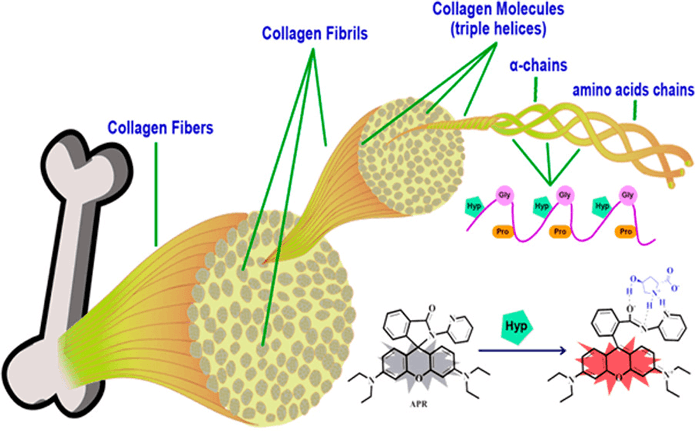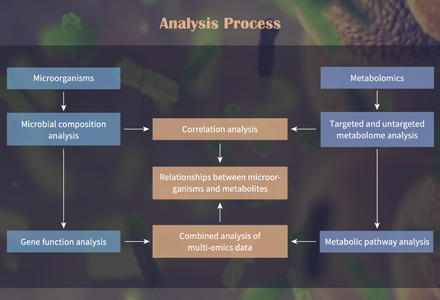L-4-Hydroxyproline Analysis Service
Submit Your InquiryL-4-Hydroxyproline is a non-essential amino acid mainly present in human protein collagen, and its content in mammalian collagen is as high as 13.5%. Hydroxyproline is used as the main component of structural proteins (such as collagen, connective tissue, plant cell walls, tendons and ligaments) and provides skin elasticity. At the same time, it is often used as a food flavor enhancer and the field of nutritional supplements. This amino acid has a special feature that it is not incorporated into collagen during the biosynthesis at the ribosome level, but is formed by post-translational modification of proline through enzymatic hydroxylation. Taking advantage of the feature that hydroxyproline has the highest content in collagen, the catabolism of collagen in the body can be understood through the determination of hydroxyproline. However, there are still many challenges in the determination of hydroxyproline. Fortunately, high performance liquid chromatography combined with UV detector detection can realize the accurate determination of L-4-hydroxyproline, using phenyl isothiocyanate (PITC) as the pre-column derivatizing agent, and using external standard method to determine L-4 -Hydroxyproline is tested, and the chromatographic-based method has a high throughput, which can meet the needs of high-throughput analysis.
Creative Proteomics provides LC-MS platform to detect L-4-Hydroxyproline. This detection method has the advantages of high sensitivity and simplified operation process, which can quickly obtain detailed amino acid analysis results to help customers further explore the application of L-4-Hydroxyproline and related L-4-Hydroxyproline metabolite research.
 Figure 1. Amino pyridine-based rhodamine conjugate (APR) has been developed as a first chemosensor for selective detection and quantification of L-4-Hydroxyproline (Hyp). (Sarkar 2017).
Figure 1. Amino pyridine-based rhodamine conjugate (APR) has been developed as a first chemosensor for selective detection and quantification of L-4-Hydroxyproline (Hyp). (Sarkar 2017).
Applications of L-4-Hydroxyproline Analysis
- Application of L-4-Hydroxyproline Analysis
- Ensure the quality of biopharmaceuticals
- Ensure the quality and safety of food nutrition fortifiers
- Ensure the quality control of food flavor enhancers
- Flavors improvement
- Reveal the molecular mechanism of L-4-hydroxyproline metabolism
- Quality control of L-4-hydroxyproline samples
- Research on biochemical reagents
Advantages of Our L-4-Hydroxyproline Analysis Service
- First-class experimental platform and experienced research engineers
- Use high performance liquid chromatography (HPLC) combined with UV detector method
- Provide customized and one-stop service
- Mature and stable experimental methods and scientific and accurate results
- Simplified test process of experimental samples and fast analysis and statistics methods
- The experimental results have good repeatability and high sensitivity
- Able to meet diverse sample testing needs
- Fast turnaround time and preferential prices
Service Workflow
This experiment uses HPLC combined with ultraviolet detectors, uses a special amino acid analysis column, uses phenyl isothiocyanate (PITC) as the pre-column derivatization agent, and uses an external standard method to analyze the L-4-Hydroxyproline Amino acid is tested. The operation process of this experiment is simplified, which can meet the needs of high-throughput sample analysis.
 Figure 2. L-4-Hydroxyproline analysis service workflow.
Figure 2. L-4-Hydroxyproline analysis service workflow.
Quantitation method: standard curve method, external standard method
Flow rate: 1.0ml/min
Wavelength: 254nm
Detection limit: 1.5mg/kg
Linear range: 0.125-6.25mg/L
Eluent: 0.1mol/L sodium acetate buffer (pH=6.5) and 80% acetonitrile as mobile phase for gradient elution
Correlation coefficient: greater than 0.999
Average recovery rate: between 90-110%
Relative standard deviation of parallel samples: less than 5.0%
Analysis content:
- Creation of calibration curve
- Determination of recovery rate
- Analysis of raw data
- Performance liquid chromatogram
- L-4-hydroxyproline quantitative analysis
- Quantitative analysis of L-4-hydroxyproline metabolites
Sample Requirements
1. The key to the amino acid sample is that the sample must be uniform, free of other impurities, and no sediment.
2. Generally, about 10g is provided for non-pure powder samples, and more than 10ml for liquid samples.
3. If it is difficult to purify the sample, it needs to be greater than 200ug/ml, the volume is not less than 5ml, and the solid mass is not less than 400ug.
Delivery
- Detailed experimental protocol
- Setting parameters of HPLC instrument
- Chromatographic condition optimization data
- Sample purification treatment and analysis report
- Analysis of the original data of high-performance liquid chromatogram and analysis of the recovery rate
- Quantitative determination report of L-4-hydroxyproline
- Customized analysis report
Chromatography-based methods have high throughput and can meet the requirements for high-throughput analysis of L-4-hydroxyproline. Creative Proteomics can have a first-class experimental analysis platform and experienced analytical engineers, which can ensure that customers are provided with diverse services to speed up the pace of research for researchers in multiple fields including food quality and safety and biochemical reagents. At the same time, a strong scientific research team can provide you with customized services to meet your diverse needs in research content.
References
- Sarkar H S, Das S, et al. First Chemosensor for Selective Detection and Quantification of L-4-Hydroxyproline in Collagen and Other Bio Samples. Analytical Chemistry. 2017;89(24):13054-13057.
- Koidl J, Hödl H, et al. Enantiorecognition of triiodothyronine and thyroxine enantiomers using different chiral selectors by HPLC and micro-HPLC. Journal of Biochemical and Biophysical Methods. 2008;70(6):1254-1260.







